Kaxuyana
- Self-denomination
- Where they are How many
- AM, PA 540 (Siasi/Sesai, 2020)
- Linguistic family
- Karib
“I am from the Kaxuyana people. Why do we call ourselves ‘Kaxuyana’? It means inhabitant of the Kaxuru (Cachorro) river. Our identity is linked to this place, nowhere else. Our name alone tells you this. Over the last 40 years our name has been pronounced in another place. Now we want to put our name in the right place! I left here when I was already and adult, and I can say, with much pride, that here is our land. Our dream was hidden for a long time, now we are showing it. I was brought her like a dog on a leash. But I never forgot my plan to return. The only thing was I depended on my children for this, since I became old during all this time. If we hadn’t thought about returning, it would never have been possible. Without ideas, we don’t do anything, but with ideas we are able to do things and guide our children. This we can do. For a time we lost this fortune possessed by our parents, but now we want to recuperate it for our own children.” Benedito Kaxuyana (September 2008)
Name
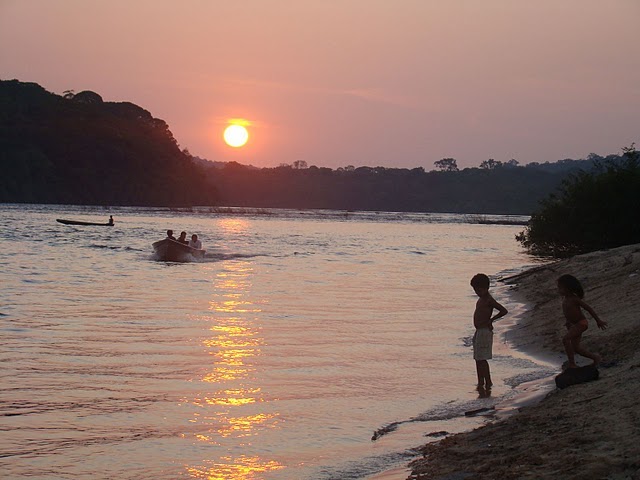
The Kaxuyana call themselves Purehno, but they became better known by the name Kaxuyana, especially from the 1960s. As the origin of the latter name indicates, the term specifically concerns the inhabitants of the Cachorro river: yana (people) inhabiting the kaxuru (Cachorro) river, an affluent of the Trombetas. Today this name encompasses an internally differentiated population, historically and geographically related to the Kaxuyana. Like the Kahuyana (people of the Kahu), Yaskuriyana (people of the Yaskuri), and so on, most of them ancient inhabitants of affluents of the Trombetas river in Pará.
Language
The Kaxuyana language is part of the Carib linguistic family and is still spoken by the group. However in the 1960s with the demographic collapse provoked by diseases transmitted during contact with the non-indigenous population colonizing their region, the number of speakers of the language fell to less than 100. In addition, following their transference in 1968 to the Parque do Tumucumaque IT in Pará, the Kaxuyana language went through a period of being devalued since they needed to learn to speak with the Tiriyó in the latter’s language. Hence since the 1970s Kaxuyana children have grown up learning to read and write in Tiriyó and speak predominantly in this language. The Kaxuyana heads of family have been striving to ensure that the Kaxuyana language is revived and spoken as a first language by most of the group’s members once again.
As well as their own language and Tiriyó, the Kaxuyana have always lived with other languages and/or dialects of neighbouring groups, such as Waiwai, Hixkariyana, Tunayana and various others. They also speak the Portuguese that they learned from black populations who have been present in the region for a long time.
Population

The information available on the Kaxuyana population size is sparse and difficult to track. The first demographic data is provided by Protásio Frikel (1970a), a specialist on the group who managed to reach some estimates for the 1920s based on information obtained from some residents of Óbidos and Oriximiná who at the time maintained links with black and indigenous populations on the middle Trombetas through the sale of Brazil nuts to the latter. According to Frikel, these informants referred to the Indians of the middle Trombetas as ‘Kaxuyana’ in general without differentiating the others who, though retaining close relations with the Kaxuyana properly speaking, identified themselves by other names and possessed dialectal differences. The indications of these informants for 1920 to 1925 vary from 300 to 500 individuals.
However precisely during this interval between 1923 and 1925 a wave of deaths swept through this population following a measles epidemic introduced by the Brazil nut harvesters. According to Frikel (1970a: 44): “The sick Indians with high fevers tried to refresh their blood by bathing in cold water. As a result they very often caught pneumonia, meaning certain death. The number of deaths was enormous. The Indians were swept by panic. It was a tragedy!” After this epidemic had run its course, the survivors themselves contacted Protásio Frikel, a group numbering between 80 and 90 people, including men, women and a few children. Only 6 to 8 people over the age of 30 survived.
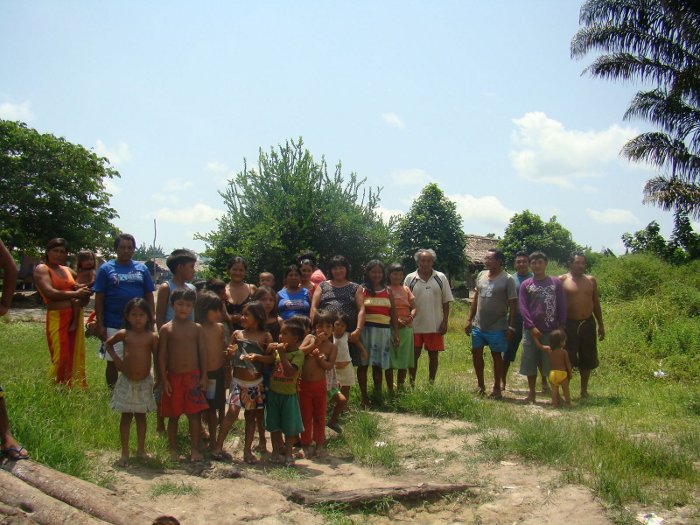
In fact, in 1948, on his first visit to the region’s Indians, Frikel (1970) encountered no more than 60 individuals in total. Although the regional population considered all of them to be Kaxuyana Indians and, although, indeed, the latter were the largest in number, Frikel also recorded families who identified themselves as Kahuyana (people of the Kahu/Trombetas river), as well as Warikyana (people of the Wariki/Ambrósio creek) and Kahyana (people of the Kuha, an affluent of the Trombetas). Frikel adds that both the Kahuyana and the Warikyana had become extinct as groups with just a few isolated individuals incorporated into the Kaxuyana through marriage.
This decline was such that in 1968 the Kaxuyana realized that if they continued without support in the region they ran a high risk of becoming extinct: estimates suggest they numbered 56 people. Of these, seven went to the Nhamundá/Mapuera and 49 to the Tiriyó Mission, the base village of the Franciscan missionaries who began working among the Tiriyó of the upper Paru de Oeste river in the far north of Pará state in 1961.
Below are some demographic estimates for the Kaxuyana from 1968 onwards:
| Year | Nhamundá/Mapuera | Paru de Oeste | Source |
| 1970 | 07 | 68 | Protásio Frikel |
| 1979 | - | 83 | Frei A. Mielert |
| 1981 | 24 | 110 | Almeida/ Dominique Gallois |
| 1997 | - | 271 | Denise Fajardo Grupioni |
The data in the table above shows that in the decade following the departure from the middle Trombetas, the Kaxuyana population practically doubled on the Paru de Oeste, and tripled on the Nhamundá. This occurred not only as a result of improvements in health conditions, but also due to increased possibilities for marriage, specifically with the Tiriyó (Paru de Oeste) and with the Waiwai and Hixkariyana (Nhamundá/Mapuera). While this ensured that the Kaxuyana demographic growth curve continued upwards, the fact that this growth resulted from interethnic marriages meant that the task of producing a census of the Kaxuyana population became fairly difficult.
A census conducted in 1997 among the Tiriyó and Kaxuyana population living on the Paru de Oeste river recorded a total of 512 Tiriyó individuals, while just 70 people identified themselves as children of a Kaxuyana father and mother and, therefore, as ‘pure’ Kaxuyana. And 201 people described themselves as ‘mixed’ as the children of a Kaxuyana father and Tiriyó mother, or vice-versa.
Today this task has become even more difficult. According to FUNAI data, the Tiriyó and Kaxuyana population of the Paru de Oeste totalled 1,090 people in 2008. Though we lack data on the evolution of the Kaxuyana population on the Nhamundá/Mapuera, or on their current number in this region, we know that many of the Kaxuyana who had migrated there had already returned to their homeland on the Cachorro/Trombetas river, just as a wave of Kaxuyana families from the Paru de Oeste river also started returning from the year 2000 onwards.
Despite all these difficulties, the Kaxuyana possess their own demographic computation and estimate that their total population, combining the inhabitants of the three occupied areas, is around 350 people. Given that in 1970 they were reduced to 55 people and by 2010 they numbered 350, we can note that their population increased six-fold over the space of four decades.
Location
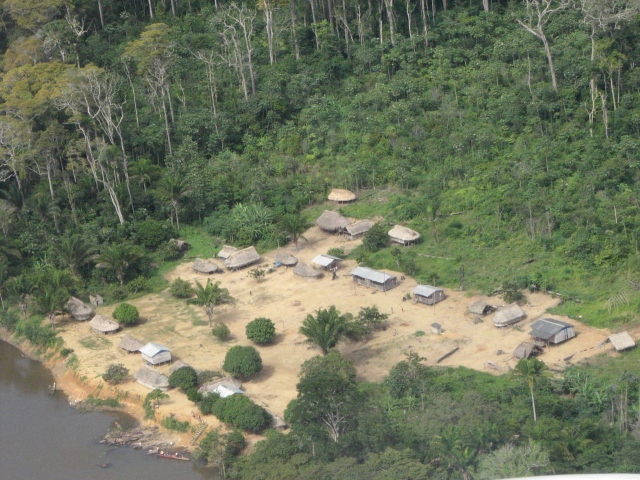
The Kaxuyana live in three distinct areas. In their original homeland, on the shores of the Cachorro river, an affluent that flows into the middle course of the Trombetas river in the northwest of Pará state; in the region formed by the Nhamundá and Mapuera rivers, where they live alongside the Waiwai and Hixkariyana, in the far west of Pará; and in the Parque do Tumucumaque Indigenous Territory, also occupied by the Tiriyó, located in the far north of Pará.
After 30 years of exile from their homeland, the Kaxuyana returned and today they find themselves back next to the ‘Kaxuru’ river, the place that gave rise to their own name ‘Kaxuyana’ – which means ‘people of the Cachorro river’ – an affluent of the middle Trombetas river, situated in the west of Pará state. The contemporary Kaxuyana consider themselves descendents not only of the ancient Kaxuyana, but also various other related groups. The names of the latter are given by the watercourses they once inhabited in a region spanning the entire middle Trombetas basin in the state of Pará. However, in 1968, in the aftermath of the fatal waves of epidemics suffered by these groups in the mid 20th century, around 48 survivors met and agreed to be transferred with the help of the FAB (Brazilian Air Force) to the Tiriyó Mission in the Parque do Tumucumaque Indigenous Territory/PA.
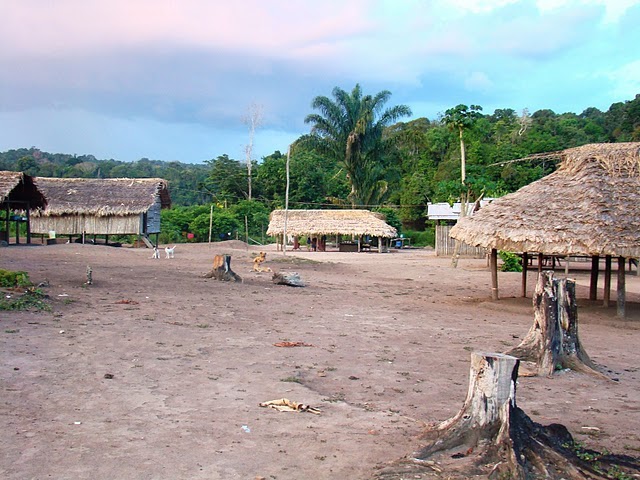
A smaller group went to live with the Hixkariyana in the region of the Nhamundá/Mapuera rivers, also in Pará state, while a few others disappeared into deeper forest to the east of the Trombetas river, though even today there are clues that some are still living there in isolation, avoiding being found. Despite sharing the same land as the Tiriyó in the Tumucumaque Park and as the Hixkariyana on the Nhamundá/Mapuera rivers for more than three decades, the Kaxuyana family heads never ceased to express their desire to return to their region of origin on the Trombetas river, an undertaking which they began in 2002 with the return of the first family. In 2009 there were eight families distributed in three villages: two on the Cachorro river and one on the Trombetas river. Studies for identifying and demarcating their traditionally occupied territory are now under way.
Mythology
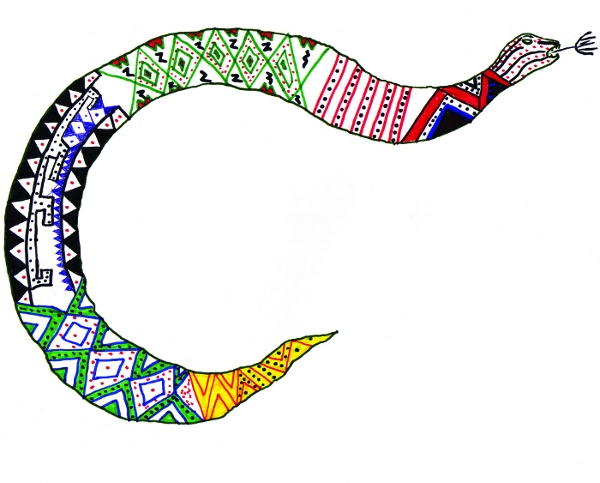
Kaxuyana mythology in general focuses on primeval events and deeds, the creator heroes of today’s Kaxuyana and the beings existing at the origin of time, beings from whom the ancestors of the Kaxuyana took some of their cultural goods, such as paint designs, or learnt songs and spells. Thus today’s Kaxuyana say that their ancestors took the first designs from the snake Marmarwimë. After a while they took new paint designs from the snake Wes-peme. And later still they took more designs from another snake: Uhrere, a serpent that lived in the forest rather than at the bottom of the river like the others. Meanwhile who taught them music and dance was a being called Ihutpoimë (person head). Their ancestors learnt to become shamans from a caiman in primeval times. This continued from one being to the next, giving origin to each of the cultural items now belonging to the Kaxuyana.
Their mythology contains a particular feature: the narratives refer to specific places across their traditionally occupied territory. Though not a feature exclusive to Kaxuyana mythology, it is not something observable in the oral tradition of each and every indigenous people. Among the Tiriyó, also speakers of a Carib language, who live in the far north of Pará, we find their own versions of myths narrated too by the Kaxuyana, but without any association with specific places. Hence much of the Tiriyó mythology lacks any spatial reference point.
Kaxuyana mythology does have these reference points, however, beginning with the cycle of primordial cataclysms: tunaimo (huge water) and wehotoimo (huge fire), for example, are situated at the origin of time, precisely in the headwater region of the Cachorrinho river where their demiurges Pura and Mura lived. A place the Kaxuyana later called ‘Paradise.’
It is said that at the beginning of time nobody existed, just Pura, Mura and the old woman Mutu with her family. Pura and Mura lived alone, protected by the bird Cancan, while Mutu was wife of the toad Cururu.
Pura and Mura wanted to steal Mutu’s fire. So they deliberately hurt themselves and went there to ask the old woman to heat some water, just to see here make fire. But she told them to close their eyes. Finally one day when the old woman went to fetch the firewood, they were able to see that she made fire with her ‘farts.’ Pura and Mura killed Mutu’s because he laughed at them. Mutu then made the huge water in revenge for her son’s death.
To save themselves from the flood, Pura and Mura climbed the moriche palm tree and remained there until the waters subsided. While they were waiting a macaw parrot brought them food in its beak for them to eat. And a dove went regularly to see whether the water level had already fallen. After the flood waters had finally drained, Mura and Pura decided to take revenge by making a large fire to burn Mutu. But their attempt failed.
They gave up and began to look for material from which to make people. And they found ipê wood. Pura and Mura made people in Paradise (the headwaters of the Cachorrinho river) and launched their folk (their creations) in canoes. But these people disappeared downriver. So they made more people, but they too disappeared. Finally, in the last canoe loaded with people, a young woman saved herself: she saw a giant snake swallowing people and as able to return to tell Pura and Mura what had happened. This woman’s name was Hehno.
Pura and Mura became very sad because there was no more wood. They decided to take revenge on the giant snake and made a giant knife. The name of this snake was Marmarwimë and he lived at the bottom of the river with his family. But Pura and Mura only attacked this snake and no one else from his family, so his son Arahua thought: I’m going to save myself, but I’ll avenge my father, Marmarwimë.
He waited in a small waterfall to attack Pura and Mura. But they saved themselves by escaping downriver in a gourd. And there, far away, they heard the extremely sad wailing coming from the depths of the sea. They emerged from the river and returned through the air back to Paradise. As the ipê wood had been used up, they tried to make more people with other kinds of wood. Using moriche palm they made peccaries, tapirs and snakes. They tried out various other species but no more people emerged. Then they found a warahari wood – in Portuguese, the taxizeiro tree. But the wood was weak and the warahayana (people made from taxi wood – i.e. human beings) ended up with short lifespans. But they were the ones who gave rise to the Kaxuyana.
Contact history
Although there are a few scattered historical documents on the Kaxuyana, found both in Brazilian archives and in those of other countries, especially Portugal, the main source of information not only on the present-day Kaxuyana but on their ancestral groups is found in the writings of Protásio Frikel. In addition to researching documents produced by 17th and 18th century chroniclers, Frikel also conducted fieldwork between 1948-55 among the Kaxuyana of the Cachorro river and among the other linguistically and culturally related neighbouring groups. Based on this research, he produced a study entitled Os Kaxuyana – notas etno-históricas (1970a), in which he organized a series of data on the population’s origin, migrations and what he called their historical ‘miscegenation.’
Frikel identified the 16th century as the period when the ancestral groups of the contemporary Kaxuyana began to arrive in the region of the Kaxuru (Cachorro) and Itxuruahu (Cachorrinho), two rivers that meet and flow into the middle Trombetas. This was the beginning of a series of migrations towards the region, which had become a refuge zone for Amazonian groups in the wake of the expansion of Portuguese colonization along the Amazon river. Based on the knowledge gleaned from Kaxuyana mythology, Frikel deduced that the period spanning from the 16th to 17th centuries corresponded to the Kaxuyana myths telling of two cataclysms: a flood, tunaimó (huge water) and a ‘huge fire’ (wehotoimó), as well as the attack by a giant snake called Marmaruimó and the killing of this snake by the twins Pura and Mura, culture heroes, deemed the creators of the Kaxuyana people. Hence we can note that the ancestral peoples of the present-day Kaxuyana were the survivors of a succession of catastrophes occurring in the region in primordial times (according to Kaxuyana mythology) and between the 16th and 17th centuries (according to Frikel’s analysis).
The first mentions of the Kaxuyana in historical documents date from the first half of the 18th century. These documents were produced following the exploratory journey through the region made by Father São Manços between 1725 and 1728. The expedition’s chronicles contain references to the Kaxuyana, identified as the ‘Caxorena.’ Afterwards, Frikel suggests, this area occupied by Indians who took their name from the Cachorro river would continue almost completely isolated, practically unknown and largely absent from the historical sources until the mid 19th century. It was only at the time – and as a result – of the Cabanagem uprising that after 1836 some quilombolas (runaway slave populations) found refuge in this region and made the first contacts with the Kaxuyana and related neighbouring groups (the Warikyana, Kahyana and Ingarüne).
During this interval between the era when primeval beings populated the myths of Kaxuyana origins and the period when the Kaxuyana land was reached by the runaway black populations, the inland region of the middle Trombetas became the setting for another history. A history of alliances and warfare among the different yana (people) and, therefore, among the different Carib-speaking ‘peoples’ who had migrated to the region or who had originated there and transformed into distinct peoples, perpetuating themselves or vanishing over time.
Information on these groups is contained in the accounts gathered by Frikel during his research and contacts with the Kaxuyana in the 1950s and 60s, or stored in the memory of the oldest among the contemporary Kaxuyana. This data is supplemented by information obtained in 1994 from Cecílio Txuruwata Kaxuyana,1 as listed below.
The Kaxuyana groups are divided into two:
- those from the Trombetas affluents
- and those from the shores of the Trombetas, called ‘Trombeteiros’
Names of the different groups that gave rise to the present-day Kaxuyana:
- Kaxuyana: inhabitants of the Katxuru (Cachorro) river.
- Iaskuriyana: inhabitants of the Iaskuri creek, affluent of the upper Trombetas river.
- Txuruayana: inhabitants of the Juruahu creek, affluent of the Cachorro river.
- Kahuyana: inhabitants of the shores of the Trombetas; they are another group, distinct from the Kaxuyana, Iaskuriyana and Juruayana, who speak a slightly different language.
- Yaromarï: inhabitants of the Kaxpakuru creek, a branch of the Trombetas.
- Ingarunë: a Trombetas group.
- Txikiyana: a Trombetas group of the Kaxpakuru creek. They speak a language similar to Kaxuyana, though spoken more quickly.
Although these differences were highly significant for the peoples involved, the history of contact between them and non-Indians reveals that these differences were little understood by the latter, when not completely invisible. The end result of this historical process was that the survivors of the different –yana, or peoples, mentioned by Cecílio gradually became known generically as Kaxuyana.
19th century
This process of ‘unifying’ the different peoples included under the Kaxuyana name took place after the Cabanagem uprising, from the second half of the 19th century onwards with the establishment of quilombola communities on the middle to upper Trombetas, and on the Cachorro river as far as the Mapuera to the west. This period saw a number of bloody conflicts and the arrival of diseases brought by the black population. At the same time, though, cohabitation of the region did not always entail conflict: while there were disputes over Brazil nut harvesting, there were also trade-based alliances between the indigenous and black populations that eventually transformed into closer ties, including marriage. The results of these exchanges eventually became reflected in the skin colour, physical features and hair type of much of the region’s indigenous population, especially in the case of the so-called ‘Trombeteiro’ Indians.
This distinction between the ‘Trombeteiros’ and those indigenous groups living in more isolated areas, far from the shores of the Trombetas, on more remote sections of its affluents, became sharper at the turn of the 20th century with the increase in Brazil nut harvesting. This commerce was mediated by the regional black population who connected the towns of the lower Amazon (Óbidos and Oriximiná) with the indigenous villages, exchanging manufactured goods for the Brazil nuts collected by the Indians.
20th century
From then until the 1950s the indigenous Kaxuyana population and neighbouring groups in general suffered a series of demographic setbacks, not always solely as a result of exogenous diseases. As Frikel points out, another aggravating factor causing these population losses was the warfare between the groups themselves. Meanwhile new groups sprang up after splits with the original group, as in the case of the Kahuyana (people of the Kahu/Trombetas) cited by Frikel (1970), who emerged following a disagreement with the Kaxuyana of the Cachorro river around 1930 when the dissident faction moved to the shores of the Trombetas.
From 1955 onwards, Protásio Frikel visited all the areas occupied by the region’s indigenous population, allowing him to compile a more precise picture of the population at the time, presented in his subsequent ethnohistorical study (Frikel 1970). In relation to the Kaxuyana, he recorded their population as approximately 60 people divided into three villages, one located on the Cachorro river with 40 people. The remaining 20 people were divided into one group living in a village on the Trombetas river and another on the Ambrósio creek. According to Frikel, the Warikiyana who inhabited the Ambrósio creek had become extinct following a yellow fever epidemic. The Kahyana, for their part, had been extinguished by internal fights in the wake of a split. The Ingarüne had joined the Tiriyó-Maraso of the Panamá river and migrated to the Araraparu Mission, run by American protestants in the south of Suriname. As well as these groups, Frikel also recorded a few isolated families scattered across the region: Ingarüne-Kahyana, Rerêyana, Prenoma and Urumamayana.
At this time, therefore, the surviving population from the various peoples cited by Frikel and Cecílio Txuruwata were few in number and reduced to just two areas: one on the shores of the Cachorro river and the other on the shores of the Trombetas river. Without any hope of surviving another epidemic, they set off in two directions: a larger group of around 49 people headed to the Tiriyó Mission on the upper Paru de Oeste, while a family of 7 people headed to a Hixkariyana village on the Nhamundá river, alongside a SIL Mission (Summer Institute of Linguistics). Some years later, following the eventual departure of this Mission, they founded their own village and forged closer ties with the regional population on the lower Nhamundá, primarily basing their activities on the Brazil nut trade.
Meanwhile the Kaxuyana who went to the Tiriyó Mission not only settled in this village, they founded around 6 of their own villages over the four decades that followed. Even so, they never abandoned the dream of returning to the Cachorro river region, as João do Valle Kaxuyana relates below.
History of the return of the Kaxuyana, told by João do Valle
We never let go of the dream of returning to the land where we were many in the time of our ancestors. And we had been planning our return from the year 2000 onwards.
It was a sad day when we were transferred. It was February the 20th 1968. On this day we felt a great sadness on abandoning our homeland. That’s why we never forgot and we never abandoned the plan to return one day.
At the start of 1998 a family left the Mission with the plan of coming as far as the Cachorro river. This family settled on the mouth of the Cachorro river, on the left shore of the Trombetas, in an area of Quilombolas. Afterwards another family came and settled on the Cachorro river, some 3km from its mouth.
In 2003 three of our families came from the Tiriyó Mission to Macapá and from there we continued, on July 24th, on a boat trip to Santarém, Oriximiná and Cachoeira Porteira. On August 10th we were invited to a meeting with the community of quilombola descendents in Cachoeira Porteira. At this meeting we explained the reason for our return.
On September 26th 2003 we began reopening a former village for the first time, a site called Waraha hatxa you kuru, which was renamed Aldeia Santidade [Sanctity Village]. This village has already become indispensable to the future of the Kaxuyana, Iaskuriyana, Kahyana, Txuruayana, Tunayana, Katuweyana, Txikuyana and Ingarïyana indigenous peoples. These are the groups inhabiting the region formed by the Cachorro, Trombetas, Iaskuri, Kaspakuru and Turuna rivers.
Today the Kaxuyana comprise an officially recognized ethnic group. It remains for them to obtain recognition of their right to their land of origin and traditional occupation. After four decades of forced exile, they took the initiative of returning to the place they would never have left had it not been for the high risk of extinction they faced due to their lack of resistance to diseases brought by the non-Indians to the region.
On the other hand, the Txikiyana, who Cecílio Txuruwata mentions above, never disappeared, though until recently there were not recognized as a group distinct from the Kaxuyana. Representatives of the group have increasingly sought to identify their different origin and area of occupation. While the Kaxuyana occupied the Cachorrinho and Cachorro rivers on the right shore of the Trombetas river, the Txikiyana occupied the Kaxpakuru creek on the left bank. They also left this area at the same time as the Kaxuyana and for the same reasons. Some went to the Tiriyó Mission and others to a Tiriyó village in the south of Suriname, next to a Protestant mission. With the period of chronic diseases over and the population starting to recover, from the 1990s onwards the population slowly began to return to Brazil and their original land on the Kaxpakuru. The biggest barriers to this return migration are the difficult access to the region and, in particular, its isolation from healthcare services.
The so-called Tunayana, historical inhabitants of the region, also returned from Suriname where they had migrated at the start of the 1960s, likewise in search of the assistance, particularly medical care, provided by the Protestant Mission of Araraparu. According to Cecílio Kaxuyana, the Tunayana originate from the upper Trombetas and speak a different language to Kaxuyana, closer in fact to the Waiwai language. All these cases are currently be officially studied for the purposes of land demarcation. Notes
1. Cecílio, deceased, identified himself as of Iaskuriyana origin (people of the Iaskuri creek), a place situated upriver of the Cachorro. During his life he lived in various villages in this region until, at the end of the 1960s, he led the relocation of the Kaxuyana to the Tiriyó Mission, where he lived, married and had children.
Ways of life

Outside of their area of traditional occupation the Kaxuyana heavily transformed their way of life in response to a series of constraints imposed by the move to a different land in completely adverse conditions. Older people say that there were just two large houses in each village: one for single men (mtareka) and an another (tamiriki) where the women lived with their husbands, their unmarried daughters and their son under the age of ten.
Boys stayed until around the age often in the women’s house. Married men lived in the men’s house but at night went to the women’s house to sleep with their wives. Only the chief always stayed in the tamiriki house, which was usually a house founded by himself. All the women worked together in the collective kitchen next to their house and took the food to the clearing in front where everyone at together, though the men would gather on one side and the women on the other.
The chief, pataietono, organized all the work, including the festivals. He would send a group to go hunting. When they returned, the hunters would first stay at a location close to the village, organizing their arrival. Meantime, the people in the village would go there to pillage what they could of their game. The day was then arranged for the meeting between the people in the village and those in the forest. First they arrived with the killed game on their shoulders, left everything in the village and returned to their encampment, where they painted and decorated themselves. On the day agreed, they arrived dancing and continued dancing with everyone together. Afterwards there was an exchange: those who had gone hunting would stay to make the house while the others went hunting. The drink consumed in the festivals is called tarubá. Before the festival begins, the village owner spreads curauá vine on the children and then everyone else. This, today’s Kaxuyana say, was to remove laziness: “it was medicine.” Only then did the festival begin: after everyone had been covered with vine, bathed and painted themselves.
Forms of management and productive activities
Cycle of work in the swiddens
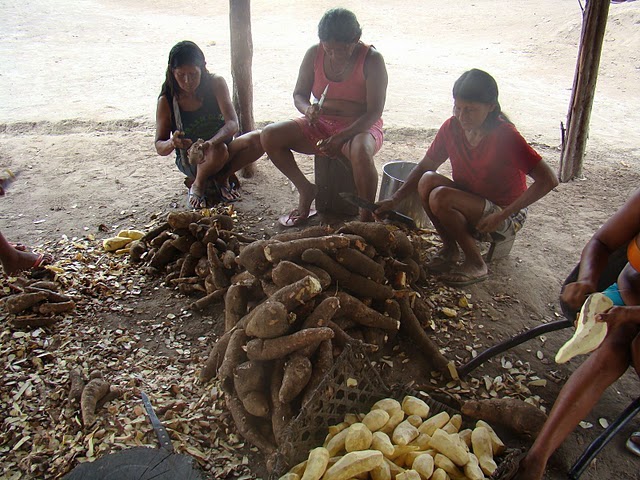
July sees the start of the work of felling the forest, followed in September by burning the swidden. If rains fall in this month, burning is postponed until October. After burning, they clear the terrain for planting. Clearing the ground takes around two weeks. For example: they might burn in the first fortnight of October and clear the plot in the second half of the month. When everything is cleared, in this example, at the start of November, work begins on planting the manioc. The men dig and the women plant the stalks.
The women wait three months, from November to March, to clear the undergrowth that has sprung up around the swidden. This work is undertaken in groups in a mutual aid schema that the Kaxuyana call ‘puxirum.’ Men work in similar groups when felling the forest.
After another three months they clear the swidden again. And around July they begin to harvest the crops. The manioc used in the fabrication of drinks ripens first, while the other types are ready around September.
Managing hunting and fishing
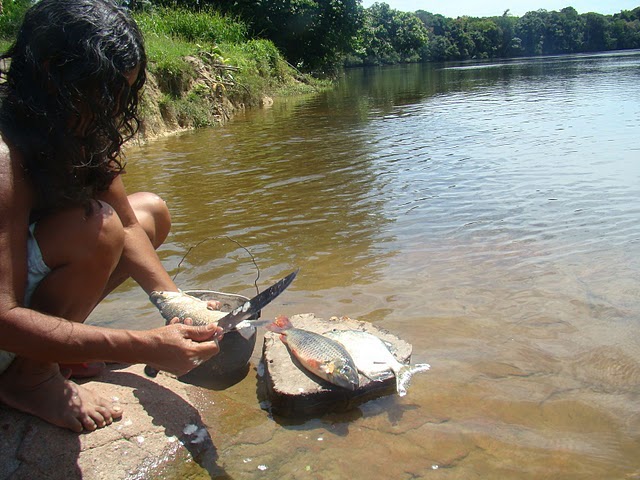
During summer fishing is prioritized and during the winter, hunting, a period when most of the game are fattened after consuming the forest fruits available over the summer. In summer a hunter can kill game only if it appears by chance and he was unable to fish anything that day.
Game that can be occasionally killed during the summer include: ewarho (tapir), kehawu (deer), ahya (white-lipped peccary) and kirman (paca). During the summer period, monkeys are usually thin, ugly, and lice-ridden. For this reason monkeys such as ituri (howler monkey), wotoimö (black spider monkey), meku (capuchin) and witxa (saki) should never be killed.
Likewise in the summer months hunters should leave alone tahokemtomu/animals that fly (pawisi/curassow, maratxi/guan, kuiwi/piping-guan, pono/tinamou): “we sometimes hear them here nearby, but we leave them undisturbed. In winter its different, if I hear one singing I kill it straight away because it’s the right season” (Mauro Mükaho Kaxuyana).
The months of October and November are the time for collecting turtle eggs, though people do not usually kill itxawaru/turtle to eat, only if there is no other option. Likewise they do not typically consume ariwe/caimans, only as a last resort.
Trade in native products (Brazil nut, flour and banana)
At some locales they harvest 40 to 50 bags of Brazil nuts, at others just 10 to 15 bags. In 2009 each crate with 10 kilos of Brazil nuts cost R$ 15.00 until May. From May onwards the price rose to R$ 25.00 and even further until the month of July, reaching R$ 75.00 for a crate of Brazil nuts. They produce flour to sell along with the Brazil nuts. In 2009 a 60 kilo bag of flour fetched as much as R$ 80.00. They also sell bananas at any time of year.
Sources of information
- FRIKEL, Protásio 1953. “Kamáni: costumes e preceitos dos índios Kachúyana a respeito do curare”. In: Revista do Museu Paulista, Nova série, vol. 7. 1955. “Tradições histórico-lendárias dos Kaxuyana e Kahyana (versão dos Kaxuyana)”. In: Revista do Museu Paulista, Nova série, vol. 9. 1966a. “Os últimos Kahyana”. In: Revista do Inst. de Estudos Brasileiros, São Paulo. USP (1): 7-34. 1970a. Os Kaxuyana: notas etno-históricas. Belém, Museu Paraense Emílio Goeldi, 82 p., il. (publicações avulsas, 14). 1970b. O Código de civilidade dos Kaxuyana. Salvador, separata de ‘Universitas”, n. 6-7. 1971b. “A mitologia solar e a filosofia de vida dos índios Kaxuyana”. In: Estudos sobre línguas e culturas indígenas. Brasília-DF, Summer Institute of Linguistics.
- GALLOIS, Dominique& RICARDO, Carlos Alberto (ed.) 1983. Povos Indígenas no Brasil: Amapá/Norte do Pará. São Paulo, CEDI, volume 3.
- GALLOIS, Dominique Tilkin & GRUPONI, Denise Fajardo 2009. Povos Indígenas no Amapá e Norte do Pará: quem são, onde estão, quantos são, como vivem e o que pensam? São Paulo, IEPÉ/Museu do Índio.
- GILDEA, Spike 1998. On Reconstructing Grammar: Comparative Cariban Morphosyntax. New York: Oxford University Press.
- GRUPIONI, Denise Fajardo 2009. Arte Visual Tiriyó e Kaxuyana - padrões de uma estética ameríndia. São Paulo: Iepé/Petrobrás Cultural/MinC.
- PAULA, Ruth Wallace de Garcia 1980. Língua Kaxuyana: fonologia segmental e afixos de posse. Publicações Avulsas do Museu Nacional n° 63. Lingüística IX, Museu Nacional, Rio de Janeiro. 1970. Notas fonológicas da língua kaxuyana. Museu Paraense Emílio Goeldi (Boletim, ns, Antropologia 43), Belém.